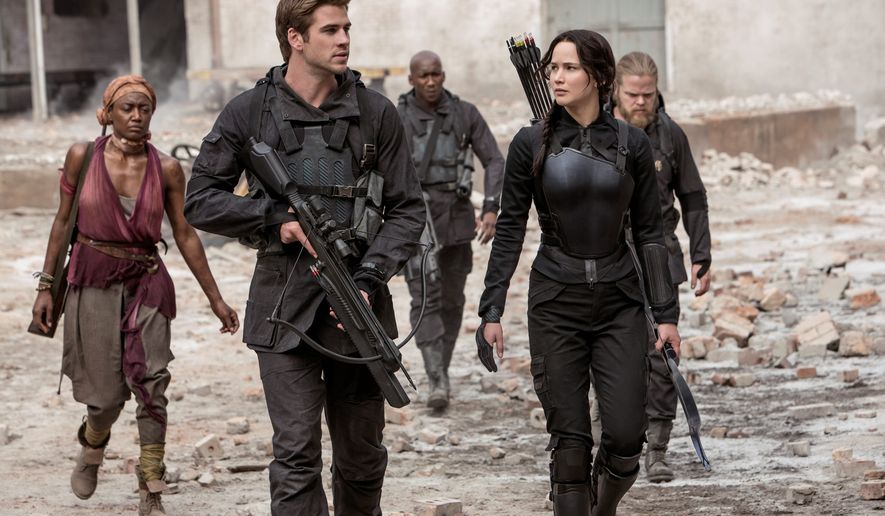Jennifer Lawrence is as much the hero of “The Hunger Games” as is her on-screen alter ego Katniss Everdeen, the sullen, brave, self-obsessed, self-sacrificing protagonist at the center of the movies.
On paper, the character doesn’t make much sense, but Ms. Lawrence does a masterful job of turning the script’s creations into an unruly and fascinating character.
It’s easy to accept those contradictions, even when they don’t seem to add up, because Ms. Lawrence seems to be struggling with them as well, slowly coming to terms with the mess of who she is. It’s that struggle that makes her so watchable, and that carries the movies.
That’s good, because there’s a lot that doesn’t add up in the latest entry, “The Hunger Games: Mockingjay Part 1,” which adapts the first half of the third and final book in the enormously popular Hunger Games series of young adult novels.
The story picks up shortly after the second film left off: Katniss, after sabotaging the murderous games at the heart of her society’s dystopian social order, has been whisked away by the resistance to a secret buried city: District 13, a low-lit, utilitarian bunker that looks like a cross between an airport, a dorm and a cafeteria.
Once there, she becomes the Mockingjay — a symbol of the rebellion, cast in propaganda films designed to spur on the resistance of the other districts, which are, for all practical purposes, slaves to the rich, elitist denizens of the Capitol.
Newcomers will likely be lost, but even casual viewers may find themselves with nagging questions about the series’ lore. The political and economic structures employed by the Capitol, led by the malevolent President Snow (a delightfully icy Donald Sutherland) to control the outer districts, never really make sense.
How, exactly, does a once-a-year game of death between stolen children keep people in line? How much power does the Capitol actually have? Sometimes it’s all powerful, sometimes it seems conveniently weak (it’s surprisingly easy to take out a key power facility).
What are the goals of the rebels, and how did they manage to build a huge underground city in secret? Aside from a desire to end Capitol control, it’s never clear what they want to replace it, or how they operate and organize.
Perhaps the biggest question the third film raises is how, specifically, a series of earnest-bordering-on-cheesy propaganda videos starring Katniss are supposed to provide the key to overthrowing the Capitol. Everyone in the movie seems entirely convinced of this.
But if a few seconds of Katniss telling off President Snow in what is essentially a YouTube clip are literally the difference between victory and defeat, then the rebels may have a weaker case than they realize.
In the previous films, these sorts of structural questions could be brushed aside in favor of a tight focus on the games themselves. But now, with no games to structure the story, they become harder to ignore. It doesn’t help that the largely action-free plot is incomplete, and feels padded to fill out two movies’ worth of running time.
Even still, the series remains as watchable as ever, thanks to effortless work by Ms. Lawrence and a large cast of highly capable supporting performers. Natalie Dormer, Julianne Moore, and Mahershala Ali join the cast in smaller roles, and turn in strong work. Jeffrey Wright, Woody Harrelson, Stanley Tucci, and Elizabeth Banks all make satisfying return appearances, as does Philip Seymour Hoffman, who reminds us of how clever and nuanced he could be, even in a small role devoted largely to moving the plot along.
In some ways, “Mockingjay Part 1” is the most interesting entry in the series; certainly it’s the most expansive. But it’s also the weakest — a movie about rebellion and politics that displays little real interest in either.
TITLE: “The Hunger Games: Mockingjay Part 1”
CREDITS: Directed by Francis Lawrence; written by Paul Craig and Danny Strong, adapted from a novel by Suzanne Collins
RATING: PG-13 for violence
RUNNING TIME: 123 minutes
MAXIMUM RATING: FOUR STARS




Please read our comment policy before commenting.